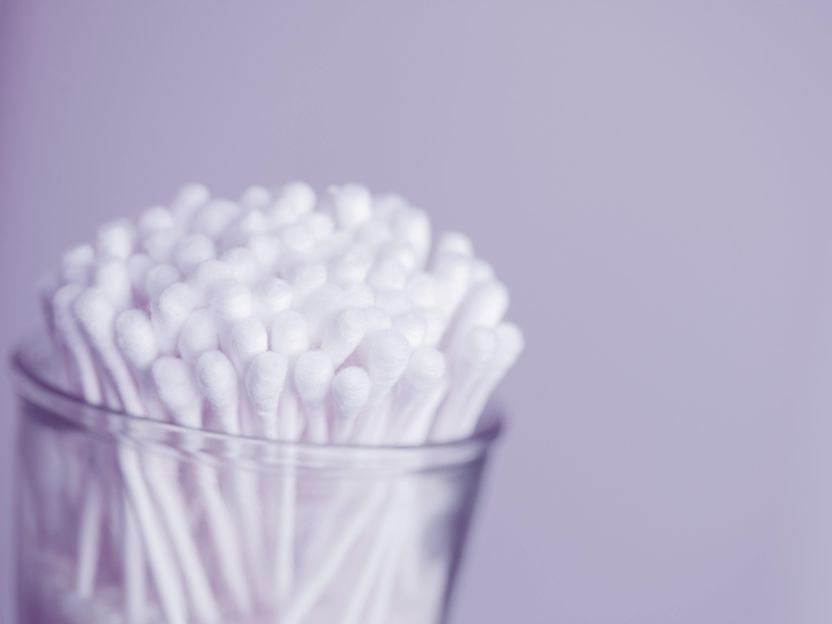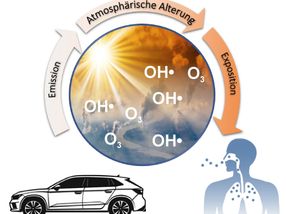Corona test with cotton swab
New study examines alternative screening options
To diagnose an infection with the coronavirus, usually a throat swab is taken and genetic viral material detected by using a highly sensitive PCR. To date, more than 65 million of these tests have been performed in Germany alone. Due to the massive increase in testing worldwide and simultaneous loss of production, there was a significant shortage of test materials in the early stage of the pandemic. In search of alternative swabbing methods, the Institute of Tropical Medicine, Travel Medicine and Human Parasitology at the University Hospital of Tübingen has now been able to demonstrate that comparably reliable corona infections can be detected using simpler methods.

Symbolic image
Unsplash
There is a wide range of swab materials, storage solutions, and reagents available for molecular viral identification in infection diagnostics. Recommended test materials are now also available for SARS-CoV-2 diagnostics. When the Covid-19 pandemic hit Germany in the spring of 2020,, many medical facilities experienced supply bottlenecks and material shortages. Laboratory materials and reagents that were urgently needed for corona testing were particularly affected.
In order to identify substitute materials that could nevertheless reliably detect SARS-CoV-2 infections, the Tübingen Institute for Tropical Medicine, Travel Medicine and Human Parasitology therefore conducted a feasibility study. In a comparative study, Dr. Thaisa Lucas Sandri from the research group of Dr. Andrea Kreidenweiss was able to show that simple cotton swabs from the supermarket can be used to take and obtain genetic material from the throat swab just as reliably as the recommended swabs. However, due to the shorter shaft of the cotton swabs, increased attention must be paid to infection protection for swabs of this type.
As a next step, the research team investigated the extent to which ready-made commercial laboratory kits used in routine laboratories to isolate the viral genetic material (the RNA of coronavirus) could be replaced by conventional laboratory protocols. The long-established method for RNA extraction proved to be as effective as a commercial kit. While the many individual steps and single reagents can make it difficult to use in a routine laboratory, it is still a reliable alternative in studies of SARS-CoV-2 infection.
Ultimately, research was conducted to determine whether PCR could be simplified for molecular viral detection of SARS-CoV-2: So-called fluorescent dye-labeled "probes" are the central component of conventional analysis. Instead of these probes, the use of an intercalating fluorescent dye was tested in this study. This method, also known as "melting curve analysis," was able to detect coronavirus infection with comparable reliability to the original method and thus represents not only a simplified but also a more cost-effective alternative. The research team is now testing the precision of the less expensive procedure in further studies.
In Europe, medical institutions now have enough materials available again for infection diagnostics. However, the situation is different in poorer countries and continents such as Africa. There, the high cost of swab kits and analytical procedures can mean that corona testing is often not performed. For this reason, the alternative options for corona testing can be very helpful in countries with difficult access to test reagents, according to the Tübingen researchers.
Original publication
Other news from the department science

Get the analytics and lab tech industry in your inbox
By submitting this form you agree that LUMITOS AG will send you the newsletter(s) selected above by email. Your data will not be passed on to third parties. Your data will be stored and processed in accordance with our data protection regulations. LUMITOS may contact you by email for the purpose of advertising or market and opinion surveys. You can revoke your consent at any time without giving reasons to LUMITOS AG, Ernst-Augustin-Str. 2, 12489 Berlin, Germany or by e-mail at revoke@lumitos.com with effect for the future. In addition, each email contains a link to unsubscribe from the corresponding newsletter.
























































